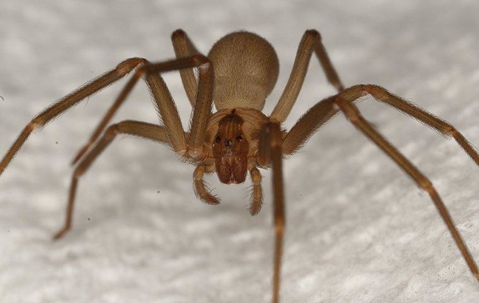The reasons that people are terrified of spiders are varied. For some, any small critter that can skitter across your skin is reason enough to be scared. For others, the fear is based on the very legitimate risk of larger health problems. Whether a spider is outright dangerous or not, it’s important to be able to tell them apart. Plus, every property owner should learn how they can reduce pest populations that attract spiders in the first place.
Common House Spiders
Most spiders you see are relatively harmless. While all spiders have venom and most can bite people, they rarely do. Being so much smaller than us, spiders of all species prefer to keep their distance from people if they can help it. That said, they’ll leave annoying webs around your property and are almost always a sign of larger pest infestations. Here are some of the more common local spiders:
- Common house spider: While this category includes a wide range of species, this is what we call general spider species that spin webs of similar shape and size.
- Sac spiders: These spiders don’t spin webs, instead of forming little silken sacs like hammocks where they rest and store their eggs during the day.
- Orb weavers: The most common variant is the yellow orb weaver, but some species can be different colored. They get their name from their uniquely circular webs, which often contain zig-zagging patterns.
Dangerous House Spiders
The more serious varieties of invasive spiders are the ones that can cause more serious health problems after a bite occurs. If you notice any worsening symptoms that are unlike the usual itchy welt from a spider bite, seek medical attention immediately. Only antivenom can counteract the effects of this venom. There are only two spiders that have potent enough venom to be considered dangerous, and a third that could be considered more formidable than other common house spiders:
- Brown recluse: Also known as “violin spiders” for the shape found on their backs, brown recluse spiders possess the most potent venom of North American spiders.
- Black widow: Known for their pitch-black bodies and red hourglass shape, black widow bites often lead to much worse symptoms than normal spider bites. Note, however, that the shape on their bellies isn’t always red or uniformly shaped.
- Wolf spider: While these spiders aren’t highly venomous to people, wolf spiders are some of the fastest spiders in the world and some of the most feared hunters in the arachnid family. Their presence on your property shouldn’t be taken lightly.
Spider Prevention Tips & Tricks
The best way to avoid serious spider infestations is to limit general pest populations that attract them in the first place. Here are some of the best ways to accomplish this:
- Food storage: Spiders don’t scavenge for food scraps, but the insects they hunt do. That’s why proper food storage not only prevents other pests but spiders, too.
- Trash storage: The other food source for hungry pests is the waste found in garbage cans. Make sure yours are well-secured both inside and outdoors.
- Crack sealing: Keeping tiny pests out of structures is a matter of regularly checking for tiny cracks or holes in exterior walls and foundations and making repairs wherever necessary.
Turn To The Experts At The First Sign
Rather than risk exposure to potentially dangerous spiders by trying to get close enough to identify them on your own, let experts assist you instead. At White Knight Pest Control, we can spot the differences between everyday house spiders and potentially dangerous ones. We can also inspect your property for signs of spiders or other pests and other factors that attract them. With ongoing prevention treatments and inspections by a trained pair of eyes, you can make sure that spiders never invade your property -- dangerous or otherwise.
Contact White Knight Pest Control today to get started on proper spider protection.

